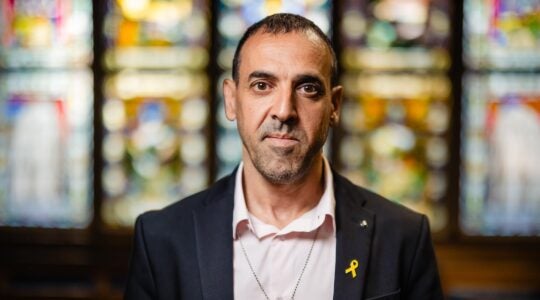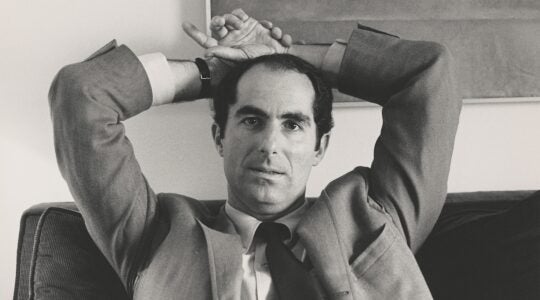The Pope is at it again. Another move, laden with significance to delight pro-Palestinian politicians and activists.
In Ramallah, every international agreement that refers to the “State of Palestine” is a major victory. This is because they make this state — unilaterally declared and rejected by much of the world including the U.S. and Israel — seem more real. And when the agreement is with the Holy See, with its perceived ethical clout, the victory is particularly sweet.
What happened last week wasn’t — whatever much media reporting says — the Vatican’s first recognition of the “State of Palestine,” but an important accord was drafted, and with symbolic timing. It was less than 48 hours before the most emotive day in the Palestinian calendar that the Vatican concluded this prestigious agreement with the Palestinians. Nakba Day, observed last Friday, is the Gregorian anniversary of Israel’s establishment, and means “disaster day” in Arabic, because this is how the Palestinian leadership expresses the impact of Israel’s establishment on their people.
As Palestinian politicians and media recounted their Nakba Day narrative this year, they had a contemporary victory to soften it, to add a bit of a triumphant post-script to the story. It didn’t matter exactly what was in the agreement, but what was important was the fact that the Palestinian leadership is achieving this diplomatic status at the Vatican, and that the “State of Palestine” is back in the news because the Vatican is talking about it.
It was an even bigger public relations coup than when, during his visit to the West Bank last year, Pope Francis made an unscheduled prayer stop at the West Bank security barrier, which Palestinians consider a symbol of oppression. “Free Palestine,” said graffiti in red to his left. Above his head, a message in black letters unforgivably exploited the Holocaust and declared: “Bethlehem look [sic] like Warsaw Ghetto.”
For the gleeful Palestinian leadership, this year’s Nakba Day fell in the middle of something of a “State of Palestine” festival in Rome. On Saturday, Pope Francis received Palestinian Authority President Mahmoud Abbas for a very warm meeting. So warm, in fact, that he may have used the controversial words “angel of peace” in relation to Abbas.
Then the next day came the canonization of the first-ever Palestinian saints — Mariam Baouardy (Bawardi) from the Galilee, who died in 1878, and Jerusalemite Marie Alphonsine Ghattas, who died in 1927.
Canonization is ostensibly a religious process, and a recognition of religious credentials. Here, there’s the added significance that every state needs its spiritual memory with its figures to revere. Perhaps more importantly, for many of the billion-plus Catholics in the world, the fact that there are now Palestinian saints makes the “State of Palestine” far more real than any accord.
But let’s take a step back and ask a question that, puzzlingly, isn’t being asked.
It makes absolute sense that the Pope wants to give Palestinians more of a cultural heritage within Catholicism, and canonizing saints is a logical means. The nationalistically charged timing is unfortunate, but the move is understandable. Yet why has he presented them as exclusively Palestinian?
We’re talking about a Galilean and a Jerusalemite, living at a time when the “Holy Land” was one, years before lines were drawn on maps and different definitions of what is Israeli and what is Palestinian came into being. One was born in a place that is clearly Israeli today, and the other was born in a place that is today claimed by both peoples. They were two women whose lives took them to areas that are today considered Palestinian and that are considered Israeli — and far beyond.
The women’s legacies are honored on both sides of the Green Line. In I’billin, an Arab town in northern Israel, the Galilean saint is honored with the Miriam Bawardi Kindergarten, the Miriam Bawardi Elementary School and the Miriam Bawardi Junior High.
So, why did Pope Francis, a man who cares so deeply for Israeli-Palestinian harmony that he invited Abbas and Israel’s then-President Shimon Peres to the Vatican to pray together, choose sectarianism over unity? Why didn’t he make the canonization an event for Israel as well as for the Palestinians — an event in which he clearly stated that the religious heritage of the two nations is entangled and therefore the saints for the “Holy Land” are saints for both nations? The Church invited Abbas, a Muslim who serves a Christian minority, so why not also Israel’s Jewish President Reuven Rivlin, who also serves a Christian minority?
None of this would have been to retroactively claim the saints as Israelis. There was no such entity as Israel in their day.
“Divided by politics, Israelis and Palestinians are united by a love for the same land with its rich indivisible history, and now even shared saints,” the Pope could have declared, addressing Abbas and Rivlin in Rome, in a speech broadest simultaneously on Israeli and Palestinian television. He could have gone on to challenge members of both nations to consider what else unites them, and to suggest that shared saints is just one manifestation of how the Church could be a constructive bridge to peace between Israelis and Palestinians.
The Pope could have deployed his moral authority in recent days to bring Palestinians and Israelis together, and send out a very real call for conciliation between them. Instead, he lent out this moral authority, and even the solemn rite of canonization, for diplomatic point-scoring.
Nathan Jeffay column appears twice a month.
The New York Jewish Week brings you the stories behind the headlines, keeping you connected to Jewish life in New York. Help sustain the reporting you trust by donating today.




